Why Do Basements Flood? Reasons, Facts & FAQ
-
Pete Ortiz
- Last updated:
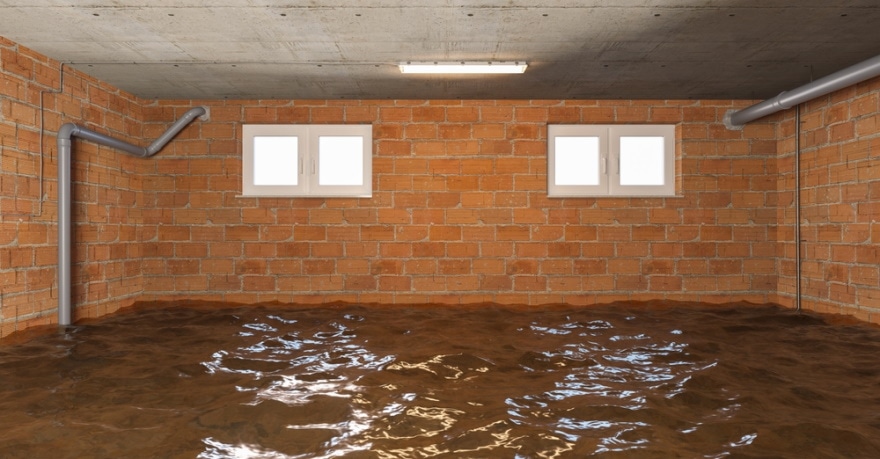
Basements are more than just a storage room where we keep our stuff. The basement is also where all the communications, pipes, wires, and plumbing run. And when properly insulated and equipped, the “lower ground floor” can be a playground, lounge room, or a place where we study and work. Unfortunately, basements are also highly prone to flooding.
Even if you live in a relatively dry area, this can still be an issue. But why do basements flood in the first place? And more importantly, what can you do to prevent that from ever happening? The following list includes the most common reasons for a basement flood and some quick, tried-and-true solutions. Let’s get started!
The 9 Reasons Why Basements Flood
1. A Cracked Water Supply Line/Tank
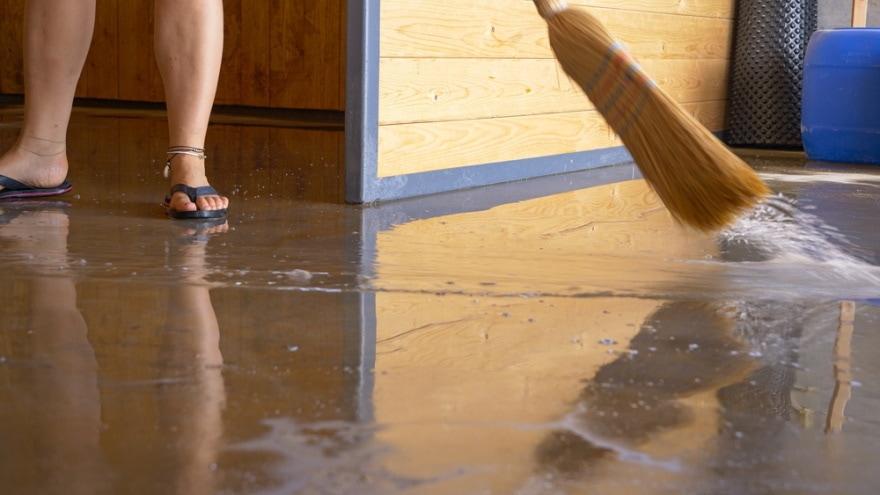
The most common causes of a flood in your basement are tiny cracks in the hot-water tank and the supply line. The tank is also known to fail once in a while, and that can lead to a disaster as well. Now, while flash floods usually happen during the wet season (spring, to be exact), cracks in the supply line are more common in winter.
The colder it is outside, the higher the chance of a pipe bursting. When water freezes, it starts to slowly yet steadily expand, and once it reaches a critical point, the tanks, tubes, and pipes begin to crack. So, how do you avoid this? By insulating the pipes, of course! Heat cables and heat tape have proven to work. Also, try to keep the basement warm 24/7.
2. A Leak in the Pipes
Even when there isn’t a single broken pipe in your house, leaks can still happen. This time around, it will be the central sewer system to blame. Maybe some of its pipes are clogged or cracked. Or it could be that it’s simply under a lot of pressure and a bit overwhelmed. A quick tip: to make sure it is, indeed, an “outside problem”, keep your eyes on the sinks, bathrooms, and flood drains.
If you notice water backing up, and it’s happening quickly, that means the municipal sanitary sewers are malfunctioning. The same is true if you have a private septic tank. In any case, the water will be really dirty with a bad odor. How do you fix this? Call a plumber. They’ll tell you whether it is the central sewer’s fault or not. Next, get in contact with local authorities and let them know that you have a problem.
3. A Faulty Drainage System

In the US, weeping tiles are the go-to choice for underground water collection. Also known as the French drains, they run underneath or near the basement (but still under the ground) and direct water into a sewer, storm drain, dry well, sump pump liner, or any other yard drain system. Unfortunately, when the tiles develop cracks or just wear out, the basement turns into an improvised pool.
So, if there are no cracked water supply lines or plumbing leaks in your basement, do check for a degraded drainage system, as that’s the third most common cause of a basement flood. Weeping tiles are quite reliable and last for a long time, but they do fail sometimes.
4. Poor-Quality Sealing
If you live in an area where it rains a lot and hurricanes are frequent, all that “extra” groundwater will accumulate, and at one point, it will rise high enough to reach the basement. That’s why it’s so important to weatherproof it properly. If there are no cracks in any of the walls or the floor, the basement won’t get flooded. Sealing products are great at keeping groundwater at bay.
However, they do lose their properties over time, no matter how good you are at maintenance. The solution here is simple: get your hands on a decent-quality sealant and patch every single crack in the basement with it. On average, acrylic sealers serve for up to 5 years, while epoxy and urethane coatings last twice as long.
5. Blocked/Clogged Gutters
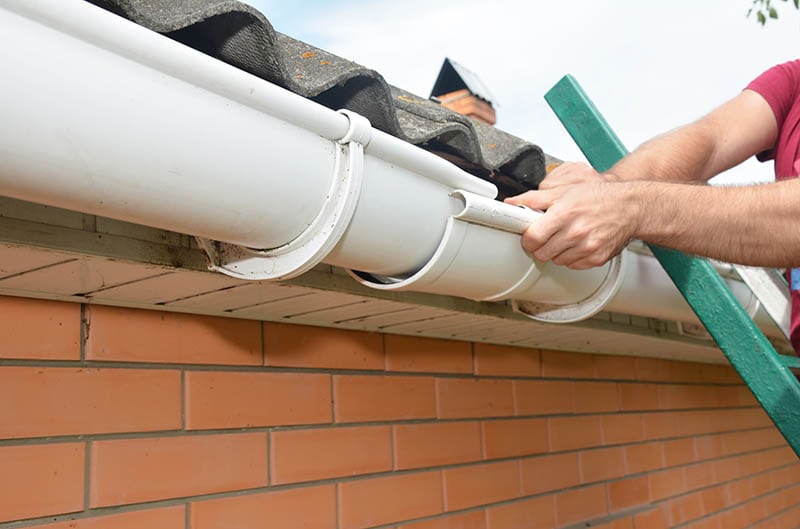
Gutters are the conducting vessels in most drainage systems. When they are clogged, that leads to flooding. The #1 job of gutters is to prevent rainwater from ruining the roof or accumulating on the ground and leaking into the basement. But, they do get hammered with leaves, debris, and dirt. This is especially true when trees are growing nearby.
Make a habit of regularly cleaning every single gutter on your property (once in 6–8 months), and that should solve the issue. And if you’re ready to pay a bit extra, invest in gutter guards. They cost $5–12 per linear foot (roughly $1,000 to cover the whole house) and are well worth the investment.
6. Broken Downspouts
Where does all the water from the gutters go? It flows right into the downspouts. After you check on the gutters, take some time to inspect the downspouts as well. Make sure they aren’t damaged in any way. Otherwise, you’ll have to deal with the same pools of water that we just mentioned. And, instead of trying to fix the cracks, just replace the faulty downspouts.
The cost per linear foot is roughly the same as for gutter guards: $5–15 and $300–1,200 for the average house. The actual price depends on the material and the build quality. Also, see that there’s a proper distance between the spouts and the walls (at least 5–6 feet) to avoid any leakage towards the basement or the main floor of the house.
7. The Sump Pump Has Stopped Working
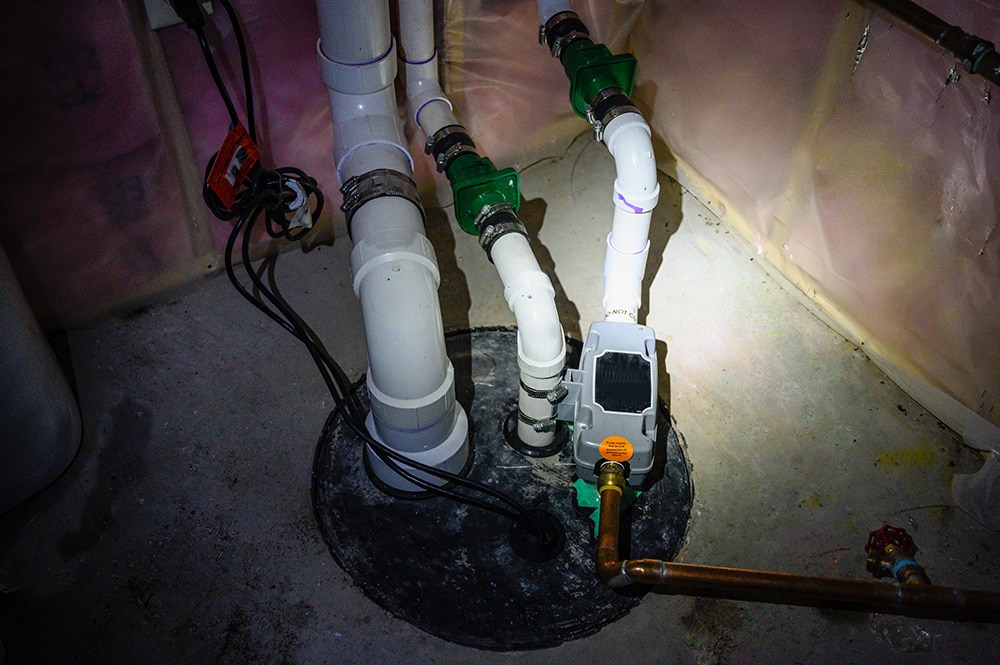
How does a sump pump work? Essentially, it’s a device that absorbs groundwater and drains it away from the basement. Sump pumps are incredibly effective in hot, humid areas that are prone to flooding. They do malfunction sometimes, though. So, don’t forget to clean the one in your house regularly and have an inspector over at least once in 1–2 years to make sure it’s not clogged or worn out.
Oh, and since this is an electric device, it relies on electricity to operate. Now, floods are often associated with power outages. If there’s no power, the pump will simply stop working. A backup system with a battery is the best solution here. It will keep the pump on long enough for it to protect the basement.
8. The Windows Are Exposed
Consider getting a set of window well covers. They’re expensive but do an excellent job of sealing basement windows shut. And don’t worry: acrylic covers won’t block natural light from seeping into the basement yet will block water, leaves, and insects. Weatherproofing basement walls/floors is a great decision, but that won’t protect the windows in any way, which is why well covers are in large demand.
9. The Location Is to Blame
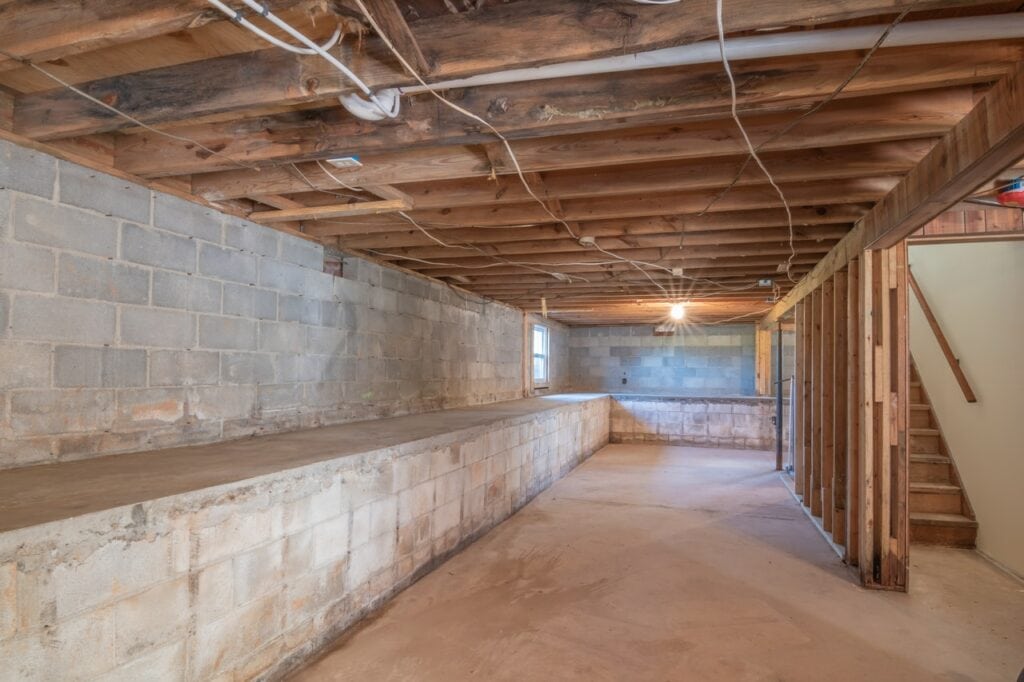
If all the gutters, pumps, pipes, tanks, and sealants are in prime condition, it could be that your house is located in an at-risk area. For example, if there’s a river (even the smallest one) nearby, it will rise during a storm or heavy rainfall. More importantly, many houses “sit” on a low point compared to sea level, which is zero feet. As a result, water finds its way underneath and around the house instead of flowing away from it.
If the basement is waterproofed and there are no issues with the plumbing, it will stay dry even if the house “attracts” all the water in the area. To solve the problem for good, try grading. Find slopes around your house and use sand and a rake to change the angle. Elevating the house is also an option, but it won’t be cheap. On average, companies charge $800–20K for this, with most homeowners paying $5,000–6,000.
Which States Are Most at Risk of Flooding?
When it rains heavily, any region, state, or town is always at risk of flooding. With that said, according to the CDC, FEMA, and other government resources, Louisiana, Florida, Mississippi, Arkansas, and pretty much the whole American South is highly prone to flooding. More than 50% of the state of Louisiana is located within flood hazard areas (Florida = 40%; Mississippi = 23%).
California, New York, and New Jersey are also on the list. Right now, approximately 25 million properties in the US are vulnerable to/at the risk of flood. And while we’re talking numbers, back in 2016, the global economy lost 56 billion USD to floods, with the US economy taking an $8-billion “hit” each year from freshwater flooding.
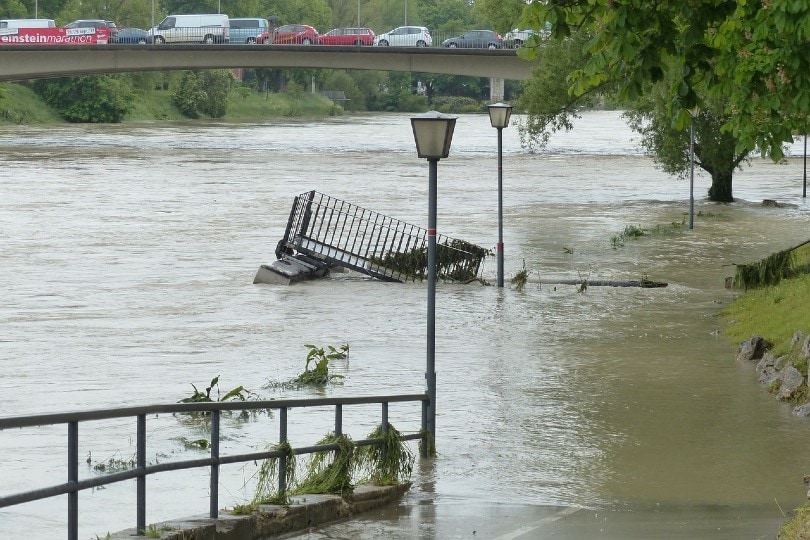
Should You Relocate to a Different State?
Unfortunately, floods aren’t the only natural disaster in the US. We also have fires, earthquakes, and tornadoes, to name a few. So, it’s safe to say that no matter where you go, you’ll have to deal with at least some sort of hazard. But if you’ve already made up your mind and want to move out, don’t forget to use FEMA’s Flood Map Service Center. It shows which parts of the country are currently (and historically) less prone to floods.
Flood Is Coming: Learning to Recognize the Signs
The worst thing about flash floods is they happen within 3–6 hours and take you by surprise. But, there are still some tried-and-true ways of predicting them. If it’s been raining for hours, chances are, your area is about to be flooded. The same is true for lingering hurricanes. Oh and, if water is accumulating in pools at a rapid rate, that could be a sign of a flood as well.
Also, tune in to local weather forecasts. While the National Weather Service might not always be accurate, most of their predictions do come true. You can listen to the radio, a podcast online, or check the news. If there’s a flood coming, the government will find a way to let the locals know.
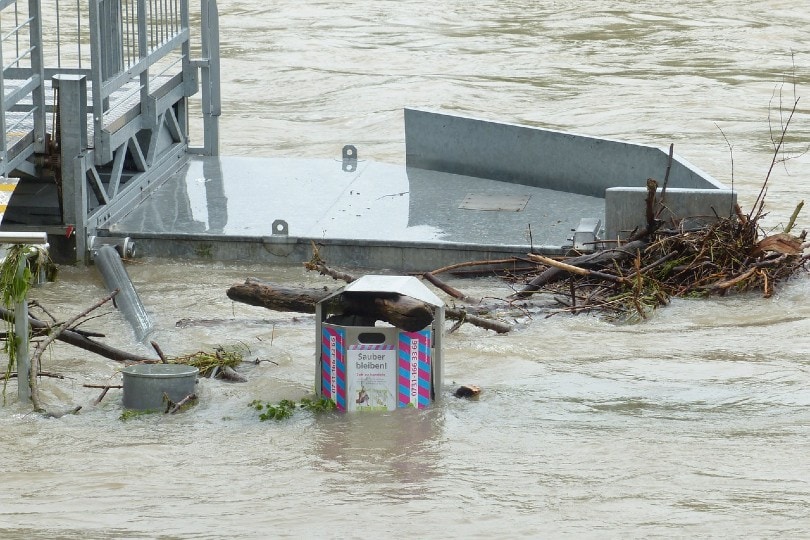
How to Protect Yourself From It?
First, stay away from basements or any other underground places. Today, we talked about weatherproofing, and if you follow our guide and fortify the basement properly, you will be able to weather most storms. Still, to be 100% safe, get to high ground—that’s your best chance of survival. Having an escape/evacuation plan ready is also essential. The good news is, in most cases, you won’t even have to leave your house.
Just go to the second floor, turn the electricity off, and wait it out. If the water is already in the basement, don’t touch any electrical outlets unless they’re 100% dry. Now, the best way to financially protect your house from such a disaster is to get flood insurance. It’s not always cheap, but if you live in an at-risk area, it will be the right investment.
What to Do With a Flooded Basement?
If you notice that it’s a broken/cracked pipe that’s causing all the trouble, turn off the water. Or, call a mechanic to do that for you if it’s an older house and the switch isn’t within reach. Depending on how big the flood is, it can be removed with a mop, bucket, and lots of work. Put on rubber boots, gloves, and a mask.
Again, make sure to turn the main power switch off. Next, assess the damage to the walls. Water makes short work of drywall; so, don’t hesitate to cut off damaged parts. Put carpets, rugs, and furniture in a dry and ventilated area. If the sump pump is still working, it should be able to deal with the water in the basement relatively quickly.
 In Conclusion
In Conclusion
Basement flooding is a rather common problem, especially for people who live in the wet and humid Southern states. Heavy rainfall, snow that melts way too fast, or a crack in the water supply line are just some of the causes. No matter how careful you are, sometimes, floods just happen! That’s why it’s so important to know in advance what to expect from Mother Nature.
Also, don’t forget about regular maintenance—it’s the key to minimizing damage and protecting your house. We’re talking about fixing worn-out pipes, filling in concrete cracks, and keeping the gutters clean. Always have the right tools and equipment ready, monitor the weather closely, and we’re confident that you’ll be able to tackle even the most severe floods!
- RiskFactor – Flood Factor Across the United States
- These Are the 10 States Most at Risk for Flooding
- Present and future flood risk in the United States
- FEMA Flood Map Service Center
- Flash Floods: Warning Signs and Staying Safe
- Gov – Flash Flooding Definition
- Gov – How are floods predicted?
- FEMA – Flood Insurance
- Angi – What Causes a Basement to Flood?
- Why Does My Basement Flood When it Rains?
- UtilitiesKingston – Causes of basement flooding
- FoundationArmor – How Long Do Concrete Sealers Last?
- How Much Do Leaf Guards / Gutter Guards Cost?
- How Much Does It Cost to Install Downspouts?
- How Much Does Gutter Installation Or Replacement Cost?
- How Much Does It Cost to Raise My House?
- Yard Grading 101: How to grade a yard for proper drainage
Featured Image Credit: r.classen, Shutterstock
Contents


